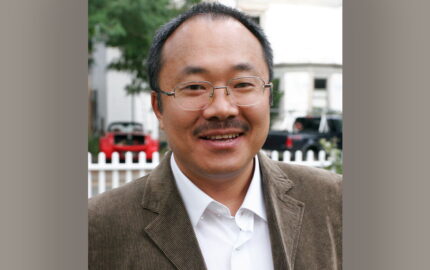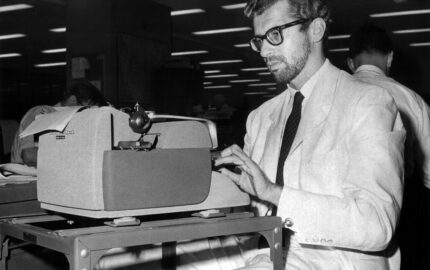
CAMBRIDGE, Mass. – “The Tax Divide,” the result of an extensive two-year investigation led by reporter Jason Grotto into the unfair property tax assessment system in Cook County, Illinois, is winner of the 2017 Taylor Family Award for Fairness in Journalism.
Published by the Chicago Tribune and ProPublica Illinois, the four-part series exposed widespread errors and inequities in a tax assessment system that punished poor homeowners and small businesses in Chicago and nearby suburbs while providing unsanctioned tax breaks to more affluent homeowners and commercial property owners. The system was also rigged to financially benefit politically connected tax attorneys.
Two other entries have been selected as finalists for the Taylor Award: “Quantity of Care,” a Seattle Times series that exposed excessive greed and medical negligence at a prominent neuroscience institute in Seattle; and “Ignoring Innocence: The Wrongfully Convicted Forced Into Plea Deals,” by ProPublica reporter Megan Rose.
In researching “The Tax Divide,” reporter Jason Grotto studied Cook County’s complicated tax system for two years, reading thousands of documents, analyzing more than 100 million computer records and interviewing dozens of experts, attorneys and property owners affected by inaccurate assessments. A 2015 Nieman Fellow, Grotto began his project as staff writer for the Chicago Tribune, which published the first three parts of the series. He continued his investigation after joining ProPublica Illinois last year, with ProPublica and the Tribune partnering on the fourth part of the series and more than a dozen follow-ups. Grotto teamed up with ProPublica Illinois data reporter Sandhya Kambhampati and Chicago Tribune reporter Ray Long to continue his work.
Though Cook County Assessor Joseph Berrios initially tried to refute Grotto’s findings, Berrios eventually was forced to agree to a major overhaul of the flawed system—one aimed at making sure the county’s working-class residents no longer have to pay more than their fair share of property taxes. Then, in March 2018, Berrios lost his re-election bid in the Democratic primary. In addition, as a result of the series, Cook County’s inspector general launched an investigation of the assessor’s office and the board president ordered a study of residential assessments. That study confirmed Grotto’s major findings. State and local lawmakers also introduced legislation to limit campaign contributions to the assessor. Using information from the series, three public-interest law offices sued Berrios and the county in December, alleging violations of state and federal civil rights and housing laws.
Commenting on the series, Taylor Award judge Rob Davis said: “This series addresses fairness in two essential ways. It unravels a systematically unfair system, one that benefits the rich over the poor. It humanizes the problem, turning what could be an arcane numbers story into something that has narrative flair, with villains and victims. The writing is so crisp, authoritative and layered with context that it forces you to read more. But where this story really sings is in its own transparency—both in confronting its subjects with detailed findings and in stating clearly: ‘This is how we did it.’ This series demonstrates foundational transparency, repeatedly showing readers the bedrock upon which the conclusions are built.”
Another Taylor judge, Tony Bartelme, added: “This is a remarkable piece of investigative reporting. This is not an easy subject to figure out—or make interesting. But Jason Grotto and his colleagues pulled it off by building his case with an unreal amount of data. In journalism’s arm’s race to crunch impressive numbers, Grotto’s 100 million-record analysis resets the bar.”
The team who produced “The Tax Divide” are reporters Jason Grotto, Sandhya Kambhampati and Ray Long; editors George Papajohn, Kaarin Tisue, Louise Kiernan and Steve Mills; photos and videos by Alyssa Pointer, Terrence Antonio James, Erin Hooley, Tonika Johnson, Zbigniew Bzdak and John J. Kim; photo and video editing by Andrew Johnston; graphics by Ryan Marx, Jemal R. Brinson, Kyle Bentle, Jonathon Berlin and David Eads; illustrations by Haisam Hussein; copy editing by Pat Daily and Stu Werner; web design by Ryan Marx and Vignesh Ramachandran; engagement by Logan Jaffe; and additional reporting by Hal Dardick, David Kidwell and John Chase.
The Taylor Award judges also recognized two finalists:
The Seattle Times for “Quantity of Care”
In “Quantity of Care,” Seattle Times investigative reporter Mike Baker and data journalist Justin Mayo exposed problems at a well-regarded neuroscience institute at Seattle’s Swedish-Cherry Hill, producing reporting that ultimately led to resignations and widespread reform within the center.
Two years in the making, the series revealed troubling practices including double-booked brain surgeons, questionable billing practices and a lack of proper protocols. In reporting the stories, the reporters used care to protect patient confidentiality and to provide the viewpoint of medical professionals. They painstakingly created data sets to paint a clear picture of what was happening at the facility, reviewed more than 10,000 pages of documents in four states and interviewed more than 200 people. They also developed a tip sheet for patients on how to approach potential surgery.
The series had important impact. One week after publication of the initial stories, the state Department of Health launched an investigation that confirmed widespread patient-safety issues. Within two weeks, Swedish’s CEO resigned. Within three weeks, a top neurosurgeon resigned, and the state later suspended his medical license. And a month after the first stories, the U.S. Department of Justice launched an investigation that is ongoing. Swedish’s new CEO has apologized for leadership lapses, and the CEO of Swedish’s parent organization, Providence, apologized in a full-page ad in The Seattle Times.
Taylor judge Ryan Gabrielson commented: “The Seattle Times series on a local hospital’s neuroscience unit is a wrenching, exhaustive and irrefutable account of profit-driven health care and the devastation inflicted on patients. It is also exquisitely fair. Mike Baker’s opening narrative on the death of a young woman following a spinal operation was as nuanced as it was beautifully written, showing what happened rather than telling, and making clear that it isn't definitively known if the doctors are directly at fault. And the surgeon at the center is a prominent voice in the series. The reporters’ interviews, records-work, and data analysis in the second main story, however, leave zero doubt about how the brain and spine unit operated: double-booking patients, needlessly complicated procedures and an emphasis on increasing revenue.”
Judge Tony Bartelme added: “This is a deftly woven series that shows how money triumphs over quality at a major Washington state hospital. It’s deceptively complex subject that could have easily steered the reporters in the wrong direction, generating fairness issues in the process. But Mike Baker and Justin Mayo used reams of data to build a bulletproof case. The diversity of stories was impressive. The writing throughout was crisp, the reporting deep.”
The members of The Seattle Times team that produced “Quantity of Care” are reporter Mike Baker; data journalist Justin Mayo; graphic artist Emily Eng; interactive developer Thomas Wilburn; copy editor Laura Gordon, managing editor Michele Matassa Flores; former investigations editor Matt Doig; digital audience editor Nick Eaton; design director Frank Mina; photographer Steve Ringman; and multimedia specialist Katie Cotterill.
ProPublica for “Ignoring Innocence: The Wrongfully Convicted Forced Into Plea Deals”
In a series of reports, ProPublica reporter Megan Rose took a close look at legal cases involving the Alford plea, a coercive deal pushed by some prosecutors not wishing to admit their own mistakes. Rose found that even after proving their innocence, defendants imprisoned for crimes they didn’t commit are sometimes told they have to plead guilty if they want to be released from jail.
Her reporting became a key part of a pardon application for Fred Steese, one of the men she wrote about who had served 21 years in a Nevada prison for a murder he didn’t commit, leading to a full and unconditional pardon in November. In Baltimore, a judge tossed out an Alford plea involving Demetrius Smith, another subject of Rose’s reporting, and rebuked the prosecutor in the case. And in Nevada, a Las Vegas judge who had been featured in one of her stories was reprimanded for ethics violations. Vanity Fair and The Atlantic were publishing partners for two of Rose’s stories.
Along with Rose, others who worked on the stories are ProPublica senior editor Tracy Weber, design director David Sleight and web producer Jillian Kumagai, as well as Vanity Fair editor-at-large Cullen Murphy, photographers Dan Winters and Lexey Swall and artist Chris Buzelli.
Commenting on Rose’s investigations, Taylor judge Rob Davis said: “The depth of her reporting on this stunningly unfair treatment of the voiceless enables her to write with piercing explanation. Her stories are exceptionally clear and authoritative. She takes a legal trick and clearly reveals the human stories of suffering left in its wake. This story demonstrates fairness by spotlighting a remarkably unfair system, exposing its inhumanity for everyone to see.”
The judges who selected this year’s Taylor Award winner and finalists are Rob Davis, an environment reporter for The Oregonian’s investigations team who won last year’s Taylor Award; 2011 Nieman Fellow Tony Bartelme, a projects reporter for the Post and Courier and a Taylor Award finalist; and ProPublica reporters Ryan Gabrielson and Topher Sanders, also finalists for last year’s Taylor Award. As ProPublica reporters, Gabrielson and Sanders recused themselves from judging this year’s entries “The Tax Divide” and “Ignoring Innocence.”
The Taylor Award will be presented on May 3, 2018 at the Nieman Foundation for Journalism at Harvard. The honor includes a $10,000 prize for the winner and $1,000 each for the two finalists. The award program was established through gifts for an endowment by members of the Taylor family, who published The Boston Globe from 1872 to 1999. The purpose of the award is to encourage fairness in news coverage by America’s journalists and news organizations.
The Nieman Foundation for Journalism at Harvard educates leaders in journalism and elevates the standards of the profession through special programs that convene scholars and experts in all fields. More than 1,500 journalists from 96 countries have been awarded Nieman Fellowships since 1938. The foundation’s other initiatives include Nieman Reports, a website and quarterly print magazine that covers thought leadership in journalism; Nieman Journalism Lab, a website that reports on the future of news, innovation and best practices in the digital media age; and Nieman Storyboard, a website that showcases exceptional narrative journalism and explores the future of nonfiction storytelling.



